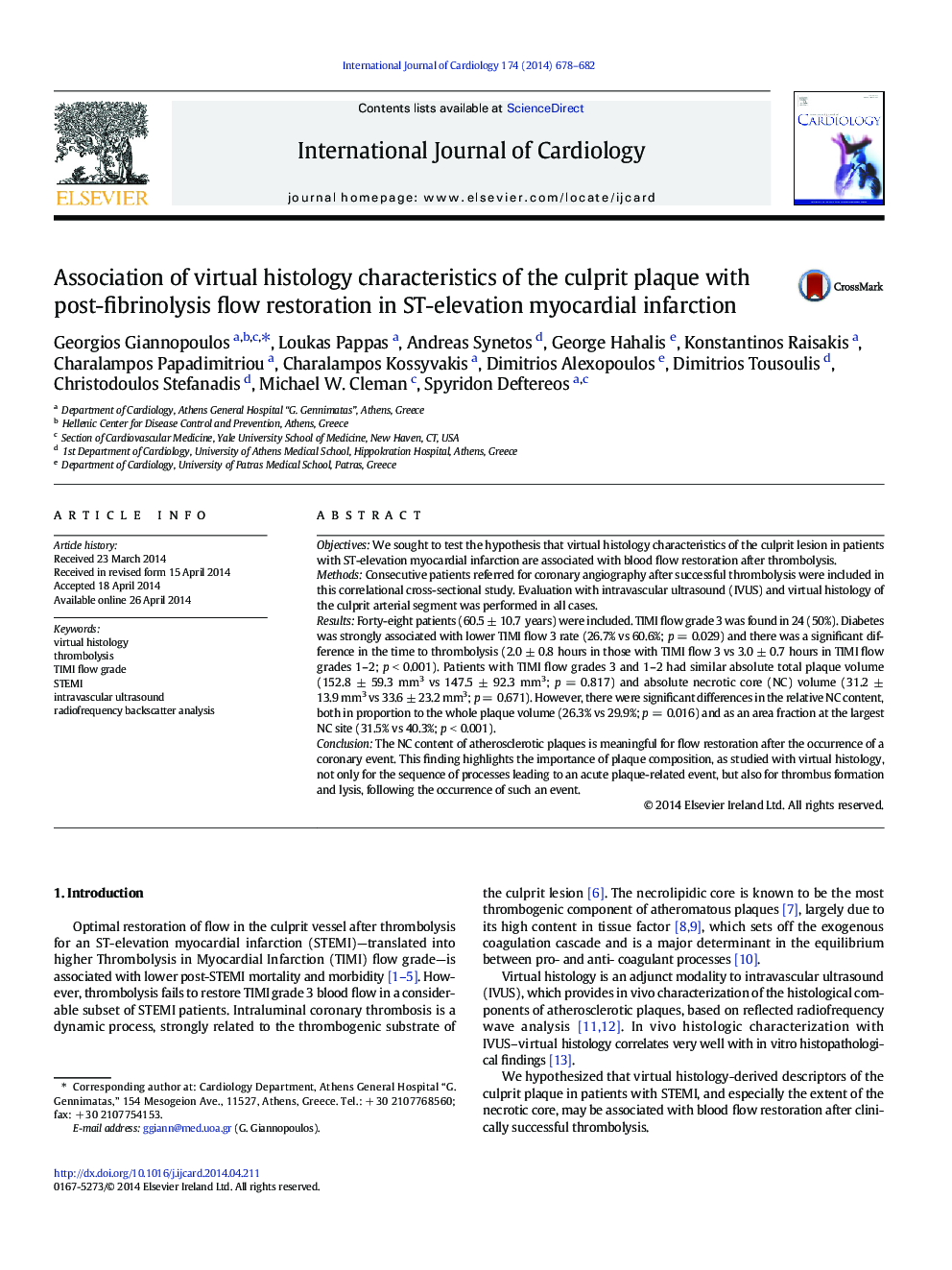| کد مقاله | کد نشریه | سال انتشار | مقاله انگلیسی | نسخه تمام متن |
|---|---|---|---|---|
| 5971542 | 1576184 | 2014 | 5 صفحه PDF | دانلود رایگان |

- Diabetes and time to thrombolysis were associated with lower TIMI flow 3 rate.
- Patients with TIMI flow grades 3 and 1-2 had similar total plaque volume.
- Patients with TIMI flow grade 3 and 1-2 had similar absolute necrotic core volume.
- Patients with TIMI flow 3 had lower relative necrotic core content.
ObjectivesWe sought to test the hypothesis that virtual histology characteristics of the culprit lesion in patients with ST-elevation myocardial infarction are associated with blood flow restoration after thrombolysis.MethodsConsecutive patients referred for coronary angiography after successful thrombolysis were included in this correlational cross-sectional study. Evaluation with intravascular ultrasound (IVUS) and virtual histology of the culprit arterial segment was performed in all cases.ResultsForty-eight patients (60.5 ± 10.7 years) were included. TIMI flow grade 3 was found in 24 (50%). Diabetes was strongly associated with lower TIMI flow 3 rate (26.7% vs 60.6%; p = 0.029) and there was a significant difference in the time to thrombolysis (2.0 ± 0.8 hours in those with TIMI flow 3 vs 3.0 ± 0.7 hours in TIMI flow grades 1-2; p < 0.001). Patients with TIMI flow grades 3 and 1-2 had similar absolute total plaque volume (152.8 ± 59.3 mm3 vs 147.5 ± 92.3 mm3; p = 0.817) and absolute necrotic core (NC) volume (31.2 ± 13.9 mm3 vs 33.6 ± 23.2 mm3; p = 0.671). However, there were significant differences in the relative NC content, both in proportion to the whole plaque volume (26.3% vs 29.9%; p = 0.016) and as an area fraction at the largest NC site (31.5% vs 40.3%; p < 0.001).ConclusionThe NC content of atherosclerotic plaques is meaningful for flow restoration after the occurrence of a coronary event. This finding highlights the importance of plaque composition, as studied with virtual histology, not only for the sequence of processes leading to an acute plaque-related event, but also for thrombus formation and lysis, following the occurrence of such an event.
Journal: International Journal of Cardiology - Volume 174, Issue 3, 1 July 2014, Pages 678-682